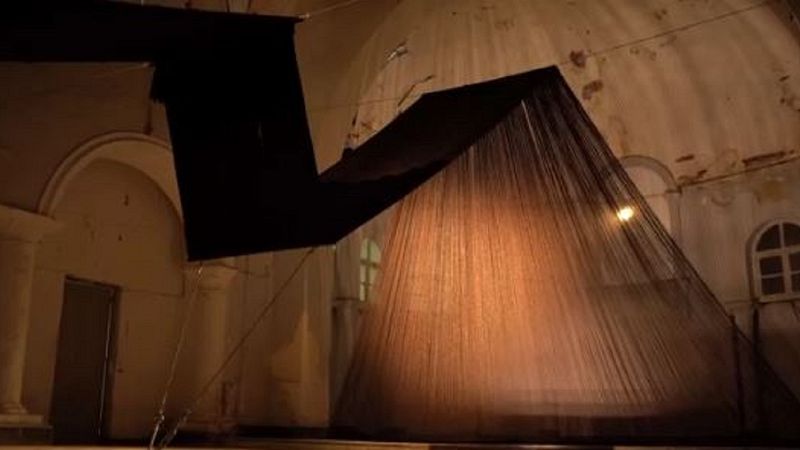Dream City biennale turns Tunis medina into living work of art

For its tenth edition, the Dream City biennale is bringing the medina of Tunis to life. The result of two years of work led by the association L’Art Rue, the festival transforms the alleys, houses, and squares of the old city into open stages for contemporary creation.
For twenty years, L’Art Rue has collaborated with residents of the medina and artists to foster a dialogue between art and everyday life.
Today, Dream City has become an essential platform that highlights numerous creations led by women.
Among them are Sofiane and Selma Ouissi, the festival’s founders, who pay tribute to Tunisian potters in their work Laaroussa — a celebration of the ancestral know-how passed down from mother to daughter: the crafting of clay dolls, laaroussa, which has been inscribed by UNESCO as part of the Intangible Cultural Heritage of Humanity.
"It is essential for Dream City to give space to women," says Sofiane Ouissi, a dancer, choreographer and co-artistic director of Dream City.
"Indeed, without any stigmatization, we must open creative space for creation itself. There are so many extraordinary, precious women creators. The role of women in Tunisian society is, in any case, a dominant and very important one — and it continues to gain ground, fortunately."
Memory and movement
Most of the works presented are original creations designed especially for this edition, such as The Grounding Point — Le point d’ancrage.
A vast woven sculpture that artist Sonia Kallel created over the course of more than a year in collaboration with Mrazigue weavers in the Tunisian desert.
The artist explores an art of thread that is both rooted in the earth and reaching outward — between memory and movement.
"We worked a lot with the material, because in nomadic weaving, the spinning of thread is very important — especially since we also worked with goat hair," Kallel says. "So we compose with nature, and it’s a harsh material that carries a certain struggle in its handling."
There’s a whole relationship with the thread — we would hold it, walk, and return. That, too, was very meaningful in relation to the idea of displacement and rootedness.
Multiple dimensions
Another highlight of the festival is Asswat — which means Voices in Arabic.
A solo choreography by Cyrinne Douss, in which the body becomes traversed by multiple voices, feminine memories, rituals, and celebrations.
It’s an immersion into the different dimensions of the feminine — between strength and vulnerability.
"I wanted to explore multiple dimensions of the feminine and multiple possible voices — memorial voices, ancestral voices, voices that run through us as women, but also those that move around us," says Douss.
Dream City continues until October 19 in the medina of Tunis — an invitation to experience the city differently, through the gaze and sensitivity of its artists.

